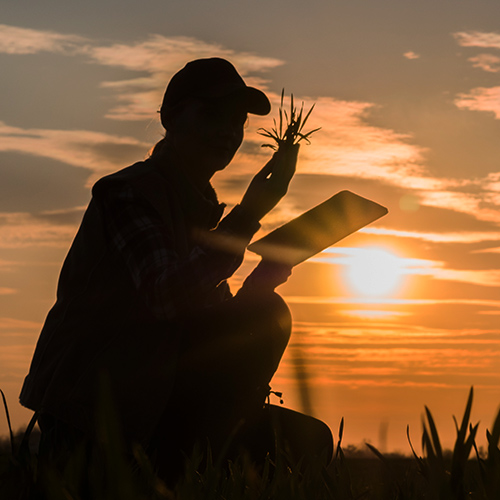CWRC commits $2 million to the University of Alberta in wheat breeding activities
May 3, 2021 (Calgary, AB; Saskatoon, SK; Carman, MB) – The Canadian Wheat Research Coalition (CWRC) – a collaboration between the Alberta Wheat Commission, Saskatchewan Wheat Development Commission and Manitoba Crop Alliance – has committed $2 million over five years towards a core breeding agreement with the University of Alberta (U of A). The investment will fund research activities through the U of A’s wheat breeding program with a specific focus on developing new Canadian Western Red Spring (CWRS) and Canadian Prairie Spring Red (CPSR) wheat varieties. The agreement came into effect on May 1, 2021 and will expire December 31, 2025.
A top objective of the agreement is for the U of A’s wheat breeding program to develop three to five registered wheat varieties focusing on the traits of early maturity, shorter straw stalk, and resistance to stripe rust and Fusarium Head Blight, all of which are key priorities of northern Alberta’s Parkland region where the program is located. The program is led by principal investigator and well-known wheat breeder, Dr. Dean Spaner.
“This agreement with the U of A is a natural fit as the CWRC recognizes the importance of having a strong breeding network across Western Canada,” says Fred Greig, CWRC chair. “Dr. Spaner and the U of A wheat breeding program have a history of successfully developing and commercializing wheat varieties with strong agronomic packages for prairie farmers.”
Since 2013, the U of A breeding program has registered 13 CWRS varieties and one CPSR variety for a total of 14 varieties.
“This funding from the CWRC provides tremendous solidification of our breeding capacity at the University of Alberta,” says Dr. Spaner. “Plant breeders have been at the forefront of feeding the world, and wheat production is an economic backbone for the western Canadian and Alberta economies, which makes this commitment from wheat producers to support our vital research a much-appreciated vote of confidence.”
In addition to delivering wheat varieties, the agreement specifies other key objectives including delivering one to three germplasm distributions, growing the infrastructure and breeding capacity at the U of A, and training a minimum of three graduate students. The U of A has the only CWRS wheat breeding program in Alberta, and is the only program that can grant graduate degrees in plant breeding in the province.
Today’s announcement with the U of A marks a significant increase from the previous agreement through the Western Grains Research Foundation (WGRF) which will conclude on May 7, 2021. The increase is due to significant progress and potential growth of the wheat breeding program.
Quotes
“As a farmer in northeastern Alberta, early maturity traits in wheat give me more flexibility when faced with adverse weather, particularly during seeding or harvest. This investment shows promise and is directly attributed to farmers setting research priorities and establishing needed traits in Canadian wheat varieties.”
- Todd Hames, Chair of the Alberta Wheat Commission
“My farm and thousands of others have benefitted from the work of wheat breeding programs such as the one at the University of Alberta. I’m proud that Sask Wheat is able to collaborate in this investment through the CWRC, as it will lead to new varieties that improve the profitability of growing wheat for farmers across the Prairies.”
- Brett Halstead, Chair of the Saskatchewan Wheat Development Commission
“Not only are new wheat varieties important for Manitoba producers, but growing the infrastructure and breeding capacity at the U of A is a significant step in the continued growth and success of wheat breeding for Canadian farmers.”
- Robert Misko, Vice Chair of the Manitoba Crop Alliance
Media Contacts:
Erin Tateson
Interim Communications Manager
Alberta Wheat and Barley Commissions
etateson@albertawheatbarley.com
403-219-7902
Dallas Carpenter
Communications Manager
Saskatchewan Wheat Development Commission
306-801-2643
Pam de Rocquigny
Chief Executive Officer
Manitoba Crop Alliance
204-745-6661
Bev Betkowski
Communications Associate
University of Alberta
780-293-1592











